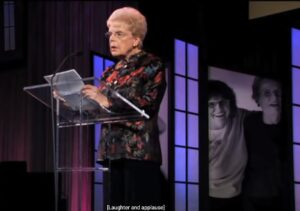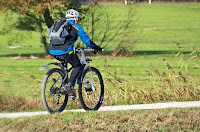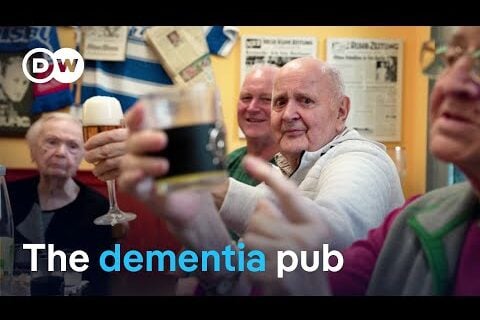Kathy Sanford is the first person in the USA to have a pacemaker implanted in her brain to treat Alzheimer’s. The pacemaker sends electronic signals to stimulate brain activity. See how she’s doing.
View more videos at: http://nbclosangeles.com.
Kathy Sanford is the first person in the USA to have a pacemaker implanted in her brain to treat Alzheimer’s. The pacemaker sends electronic signals to stimulate brain activity. See how she’s doing.






This site was inspired by my Mom’s autoimmune dementia.
It is a place where we separate out the wheat from the chafe, the important articles & videos from each week’s river of news. Google gets a new post on Alzheimer’s or dementia every 7 minutes. That can overwhelm anyone looking for help. This site filters out, focuses on and offers only the best information. it has helped hundreds of thousands of people since it debuted in 2007. Thanks to our many subscribers for your supportive feedback.
The site is dedicated to all those preserving the dignity of the community of people living with dementia.
Peter Berger, Editor
Share this page To

LIFESTYLE VIDEO + ARTICLE: Seven cardiovascular and brain health factors cited by top cardiologists have been linked to a lower risk of dementia. Read on

A cozy pub inside a nursing home is doing something remarkable — helping residents with dementia reconnect, open up, and feel like themselves again. Here are 10 ways this surprising space is changing daily life.

CBS NEWS – DIET VIDEO: One artificially-sweetened drink per day could double risk of stroke or dementia. See CBS Dr. Tara Narula discuss the brain-effects of diet drinks, with links to subsequent research reinforcing her claim.

RESISTING ALZHEIMER’S VIDEO: “Still Alice” author & neuroscientist Lisa Genova shares the latest science investigating dementia. See promising research on what to do to build an Alzheimer’s-resistant brain.
Visit Alzheimer's Weekly On
Alzheimer’s & Dementia Weekly was inspired by my mother’s journey with autoimmune dementia and my dad’s with Parkinson’s dementia.
Walking beside them opened my eyes to the confusion, the courage, and the deep humanity found in families and professionals caring for someone they love.
Since its debut in 2007, this site has had one clear mission:
to separate the wheat from the chaff — to highlight only the most essential articles, studies, tools, and videos from the overwhelming river of dementia-related information.
(At last count, Google receives a new post on Alzheimer’s or dementia every seven minutes.) For anyone seeking clarity or support, that constant flow can be exhausting and discouraging.
Alzheimer’s Weekly filters, translates, and explains what matters most, helping hundreds of thousands of families, clinicians, and care teams around the world make sense of the latest research and best practices.
This site is dedicated to everyone who works—often quietly and tirelessly—to preserve dignity in the community of people living with dementia.
With experience in dementia caregiving, public education, and Alzheimer’s-focused writing—and a professional research background shaped in what many consider one of the world’s top laboratories—I work to make complex findings clear, practical, and genuinely helpful for both families and professionals providing care.
My goal is simple:
Translate the best science into guidance that lightens the load, strengthens understanding, and helps every person with dementia live with dignity.
Peter Berger
Editor, Alzheimer’s Weekly
I wish you well, Doctor's. We're counting on you!
Don Miller
Great news!!! Keep up the great work doctors, patients, scientists and God bless!!!
This comment has been removed by the author.